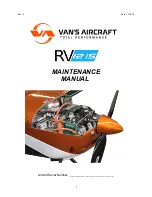
R Mod : 3832 or 8259
ATR 42 Model : 400/500
TCAS
LIMITATIONS
P 1
NOV 01
050
2.01
.
06
TCAS
LIMITATIONS
The limitations in Part 2.01 are applicable with the addition of the following:
1-TCAS operation is approved for use in VFR meteorological conditions (VMC) and
IFR meteorological conditions (IMC).
2-The pilot must not initiate evasive maneuvers using information from the traffic
display only or from a traffic advisory (TCAS TA) only, without visually sighting the
traffic. These displays and advisories are intended only for assistance in visually
locating the traffic and lack the resolution necessary for use in evasive maneuvering.
3-Compliance with TCAS resolution advisory is required unless the pilot considers it
unsafe to do so or unless the flight crew has better information (e.g. ATC guidance,
definitive visual acquisition, etc) about the aircraft causing the R.A. and can
maintain safe operation.
However, maneuvers which are in the opposite direction of the resolution advisory
(TCAS RA) are extremely hazardous and are prohibited unless it is visually
determined they are the only means to assure safe separation.
CAUTION
: Once a non crossing RA has been issued the vertical speed should be
accurately adjusted to comply with the RA, in order to avoid negating
the effectiveness of a co-ordinated maneuvre by the intruder.
WARNING
: Non compliance with a crossing RA by one airplane may result in
reduced vertical separation. Therefore, safe horizontal separation
must also be assured by visual means.
4-Evasive maneuvring should be made with the autopilot disengaged, and limited to
the minimum required to comply with the RA. The pilot must promptly return to the
previous ATC clearance when the TCAS CLEAR OF CONFLICT" voice message is
announced.
5-Prior to perform RA's climb or increase climb, the crew should select the appropriate
engine power setting on the power MGT rotary selector and, if necessary, manually
adjust CLs.
6-When a climb or increase climb RA occurs with the airplane in the landing
configuration or in the go-around phase, a normal procedure of go-around should
be followed including the appropriate power increase and configuration changes.
AA
AviationLearning.net
01/07//2018 REV 1 These notes are not revised after issue For Training Purposes Only
Page 553 of 764







































